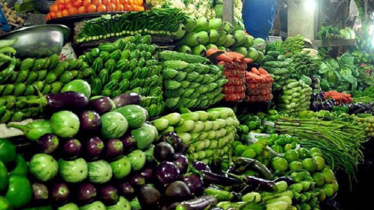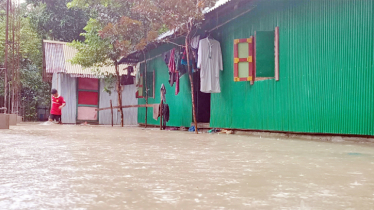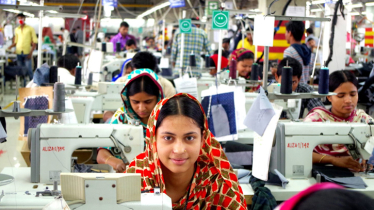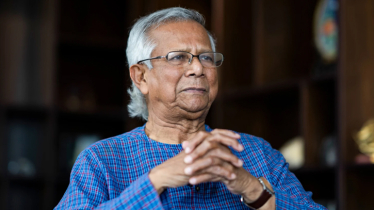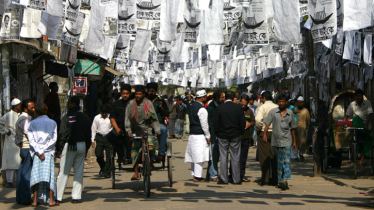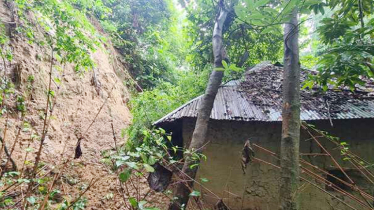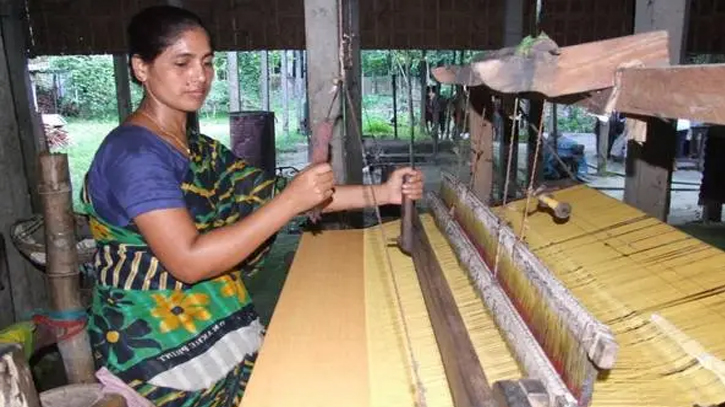
Photo : Collected
The citizenry of Bangladesh is amazed and shocked to hear that the Indian Geographical Indications Registry Office has registered the Tangail Saree as a Geographical Indication (GI) product following the application by the West Bengal State Handloom Weavers Cooperative Society Limited.
The outcry of social media caught the attention of the Bangladesh authorities. Amid protests against the GI recognition of Tangail Saree as an India-origin product, the Bangladesh Department of Patents, Designs, and Trademarks held an urgent meeting to discuss the crucial issue.
In the face of fierce criticism, the Indian Ministry of Culture's online post on the status of the GI tag Tangail Saree received on January 2, 2024 and valid until September 7, 2030, the incongruous post has now been deleted.
Hundreds of online activists demanded that Bangladesh should file a complaint with the World Intellectual Property Organisation against the GI tag, which they described as stealing the heritage of a Saree produced in Tangail for centuries.
The official Facebook claimed that the Tangail Saree, originating from West Bengal, is a traditional hand-woven masterpiece that has angered on both sides of the border.
The post describes that the Saree is renowned for its fine texture, vibrant colours, and intricate Jamdani motifs, it epitomises the region's rich cultural heritage.
Well, each Tangail Saree is a testament to skilled craftsmanship, seamlessly weaving together tradition and elegance for centuries.
Good sense has prevailed that the Department of Patents, Designs and Trademarks under the Ministry of Industries consider raising objections and lodge protests regarding the GI recognition given to India.
Besides, Bangladesh, Tangail Saree is woven in Nadia and East Bardhaman districts of West Bengal.
A large number of handloom artisans migrated to India from Bangladesh during the partition in 1947 and again during the bloody Liberation War in 1971. They settled in some places in West Bengal and popularised a particular variety of the Saree.
The hugely popular Tangail cotton Saree has a finer count and is decorated with extra warp designs using coloured yarn.
Folk anthropologists claim that Tangail Saree is one of the oldest cottage industries in Bangladesh. The history of weaving the Saree dates back to the British period, but it spread widely at the end of the nineteenth century, according to several open-source information.
The Basak community of Pathrail in Tangail, Bangladesh are involved in weaving a specialised Saree is among the oldest traditional handloom produced the artisans.
It is also not acceptable that social media outcries alert the authorities, which is not their responsibility to monitor what produce or products are GI-tagged.
Many will agree that the government authorities should immediately make a list of traditional foods, farm produce, sweetmeats, folk handicrafts and a host of other products that should be GI-tagged to avoid embarrassment.
Hopefully, the Tangail Saree will return to Tangail and will keep the traditional handloom tradition with glory.
Messenger/Fameema

